
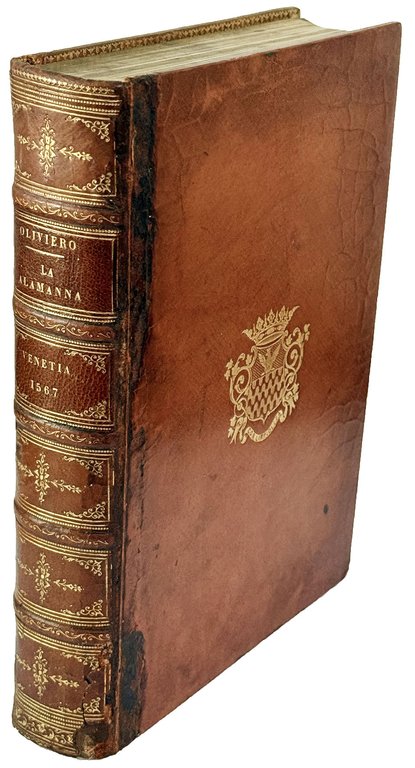
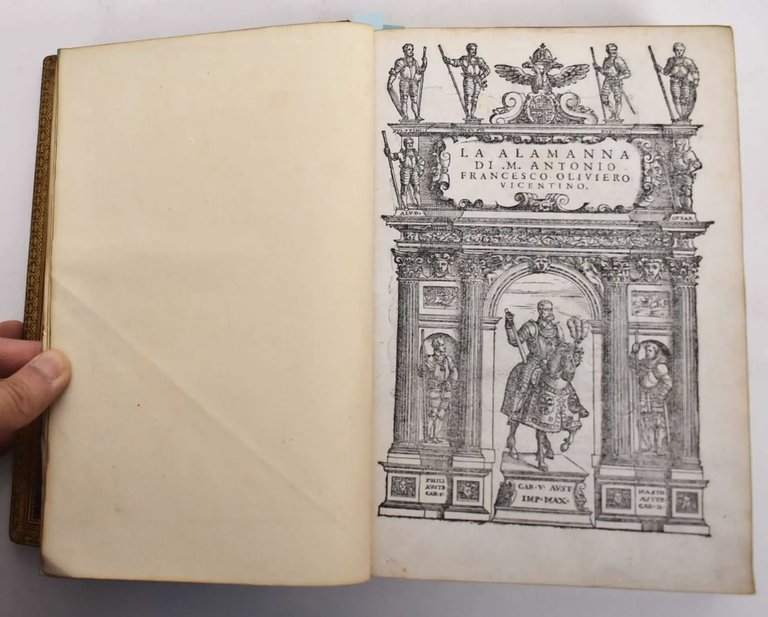
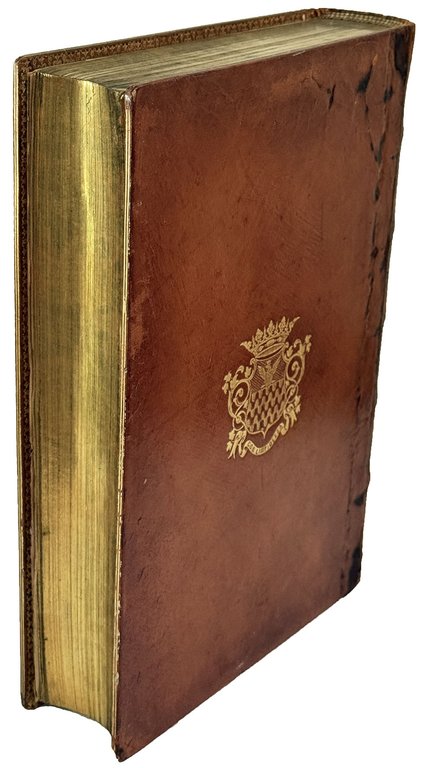

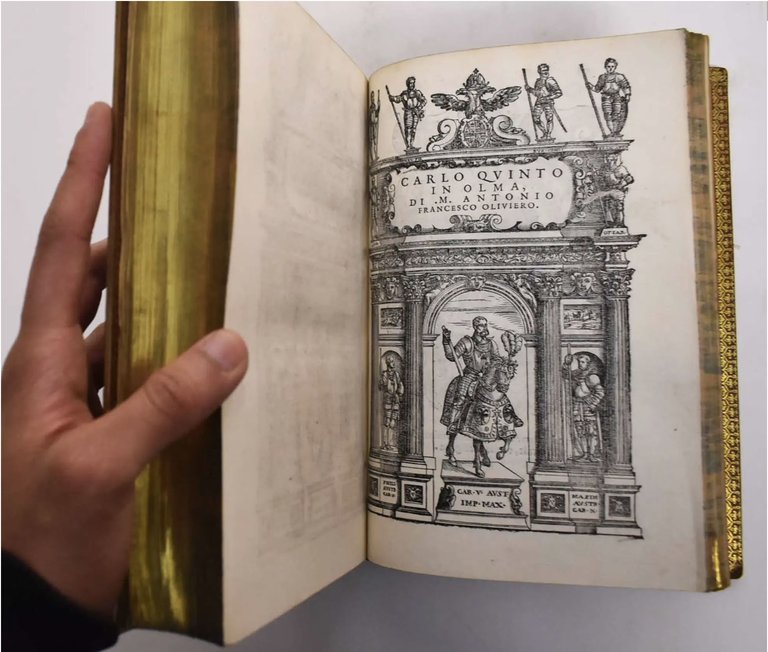
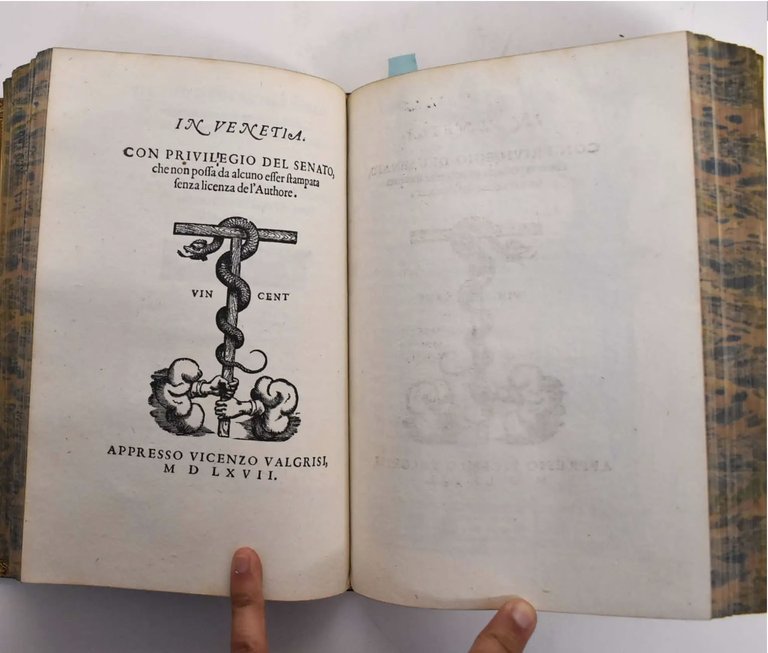
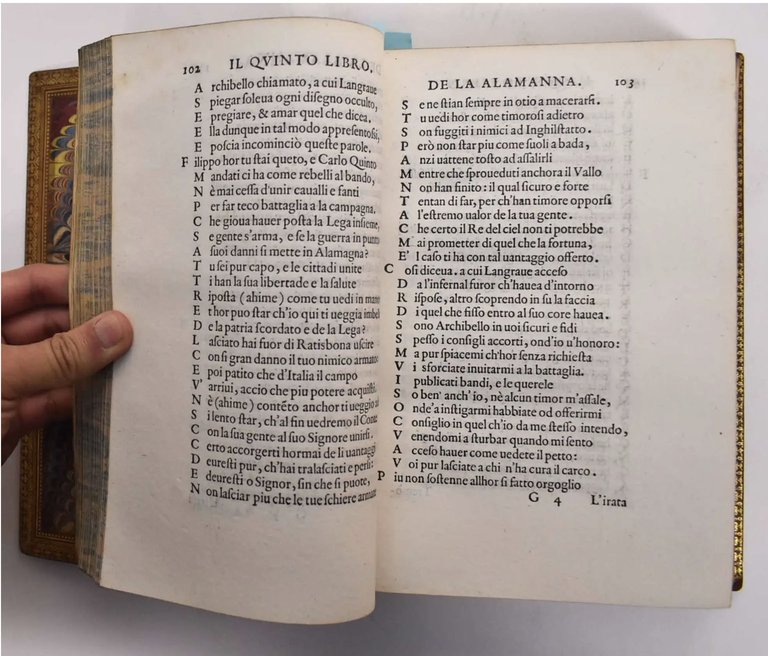
Livres anciens et modernes
OLIVIERO, Antonio Francesco (1520-1580)
La Alamanna di M. Antonio Francesco Oliviero Vicentino
Vicenzo Valgrisi, 1567
3400,00 €
Govi Libreria Antiquaria
(Modena, Italie)
Les frais d'expédition corrects sont calculés une fois que l'adresse de livraison a été indiquée lors de la création de la commande. Un ou plusieurs modes de livraison sont disponibles à la discrétion du vendeur : standard, express, economy, in store pick-up.
Conditions d'expédition de la Librairie:
Pour les articles dont le prix est supérieur à 300 euros, il est possible de demander un plan de paiement échelonné à Maremagnum. Le paiement peut être effectué avec Carta del Docente, Carta della cultura giovani e del merito, Public Administration.
Les délais de livraison sont estimés en fonction du temps d'expédition de la librairie et de la livraison par le transporteur. En cas de retenue douanière, des retards de livraison peuvent survenir. Les frais de douane éventuels sont à la charge du destinataire.
Pour plus d'informationsMode de Paiement
- PayPal
- Carte bancaire
- Virement bancaire
-
-
Découvrez comment utiliser
votre Carta del Docente -
Découvrez comment utiliser
votre Carta della cultura giovani e del merito
Détails
Description
Three parts in two volumes, 4to (mm). [16], 316, [4]; 330, [6]; 43, [1], 15, [1] pp. Collation: 1A8, A-V8; a-x8; aa-bb8 cc6 aaa8. Leaves V8 and x8 are blank. Colophon and printer's device on ll. V7v, x6r, cc6v and aaa8v. Errata for part one and two on ll. x6v-x7r; errata for part three on l. cc6r. La Alamanna is divided into two parts, and is followed by Oliviero's Carlo Quinto in Olma, L'origine d'amore and the Canzone deplorando le miserie d'Italia per le guerre sparse per tutta la Provincia l'anno 1557 with separate numbering at the end of volume two. Woodcut architectonical title with woodcut portrait of the author on verso, to both volumes, and repeated with some minor changes for the third part (Carlo Quinto in Olma), which has separate title. The title-pages show a triumphal arch with equestrian portrait and imperial arms of Charles V; the standing figures on the sides are Charles V's military personel in the war, among them Fernando Alvarez de Toledo, duke of Alba and lieutenenat-general of the imperial army, Ottavio Farnese, duke of Castro and general of the Pope's army, Philipp II, and Maximilian. The portrait of the author is within a scrollwork frame which includes his coat of arms. Moreover part one is illustrated with 12 full-page and 24 half-page woodcuts. Woodcut historiated initials and decorative head- and tail-pieces. Late 19th-century full polished calf with armorial gilt stamp on covers, spine with raised bands with gilt tooling on bands and extensive gilt tooling and scrollwork in the compartments, all edges gilt, marbled endpapers, the binding is marked on the inside scrolled border “Binda Milano” (joints and bottom of spine repaired). A very nice, clean copy in pristine condition.
Provenance: The coat-of-arms on the covers, featuring a crowned eagle beneath a larger crown with the motto “Con Limpidezza” in the scrollwork beneath, belongs to the Italian collector and writer Girolamo D'Adda Salvaterra (1815-1881), whose library became one of the most important in Milan and was then acquired by the English bibliophile Charles Fairfax Murray (cf. D.B.I., Rome, 1985, vol. 341, pp. 617-622; Catalogo dei libri posseduti da Ch. Fairfax Murray provenienti dalla bibl. del marchese Girolamo d'Adda, London, 1902; and V. Spreti, Enciclopedia storico-nobiliare italiana, Milan, 1928, vol. I, pp. 315-316).
Rare first edition of this epic poem in 24 books chronicling the so-called Schmalkaldic War between Emperor Charles V and the Schmalkaldic League in the years 1546-1547, during which Charles V successfully forced the Protestant princes into submission.
The woodcuts illustrating the first volume show battle and camp scenes with the principal characters identified, possibly by the same artist who cut for Valgrisi the blocks of Ariosto's Orlando Furioso. The illustration for book one shows the author, Homer, Vergil, the Muses and St. Peter. “Pictured in other cuts are various battles of the war, with Charles V and the other participants, maps, and city views. Valgrisi mentioned the expense of the illustrations in his address to the reader in part I (leaf A7v), and this program of illustration did prove to be too elaborate to continue throughout the work” (R. Mortimer, Harvard College Library, Italian 16th Century Books, Cambridge MA, 1974, II, p. 476).
It appears from Valgrisi's preface to part two that other illustrations had been planned throughout the text, but were not realized because of the considerable expense involved.
“Oltrepassato il crinale della metà del Cinquecento, Antonio Francesco Olivieri, letterato vicentino, giurista, vicino a Giovan Giorgio Trissino e ad Andrea Palladio, promuove la storia contemporanea a materia di poema eroico: la sua fluviale Alamanna si incentra, infatti, sulla guerra ingaggiata da Carlo V contro la Lega di Smalcalda (1546-47). Pubblicata nel 1567 da Vincenzo Valgrisi, editore di origini lionesi ma trapiantato in Italia, prima a Roma e poi

